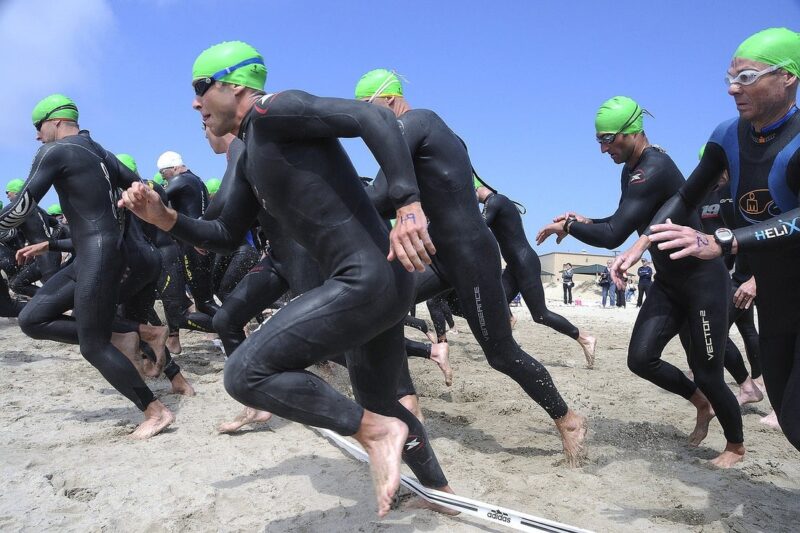Choosing the right clothes for a triathlon is important. They should look good and help you move quickly and comfortably in the water, on your bike, and while running.
Swim Attire
When you’re gearing up for the swim leg of a triathlon, your swimming outfit plays a big role. Here’s what you need.
Tri-suit
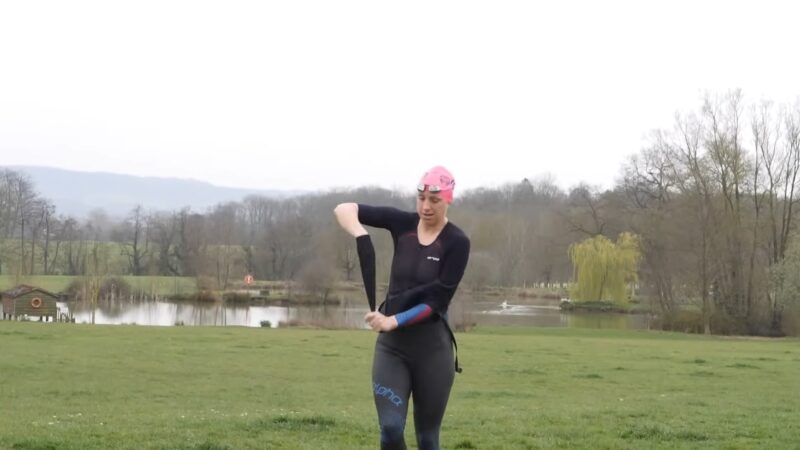
A tri-suit is an all-in-one garment specifically designed for triathlons. It’s made from quick-drying material, offers flexibility during the swim, and has a slight padding for the bike segment. Wearing a tri-suit means you won’t need to change clothes between events, saving precious time.
Plus, its aerodynamic design can give you an edge in the water and on the road.
Goggles and Swim Hat
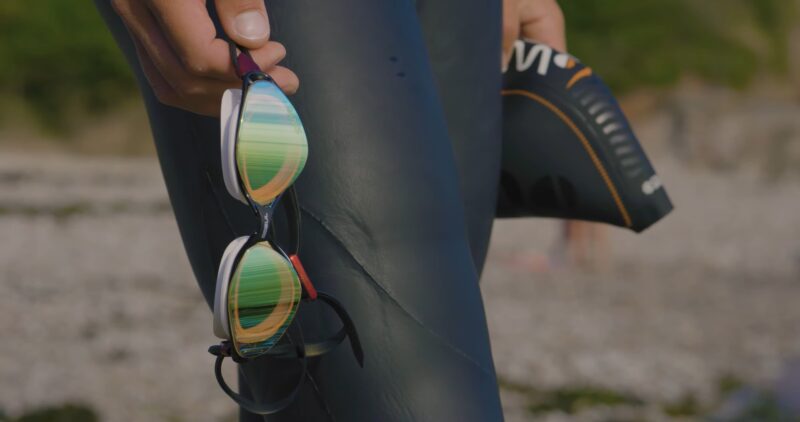
Goggles and a swim hat are essential for the swim. Goggles protect your eyes from the water and improve visibility, while a swim hat keeps your head warm and increases your visibility to others.
Together, they enhance your swimming experience by providing comfort and safety.
Wetsuit
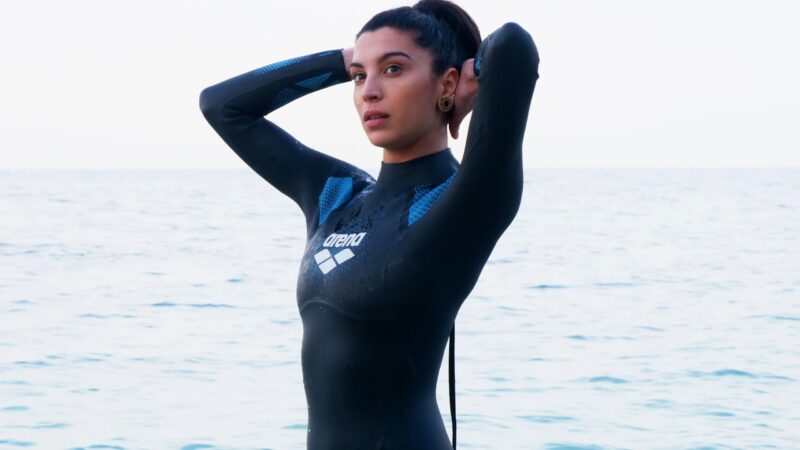
A wetsuit is recommended for open-water swims, especially in colder conditions. It improves buoyancy, reduces drag in the water, and helps conserve energy.
In very cold waters, adding a neoprene skullcap, gloves, and socks can provide extra warmth. Quick removal features are also important for fast transitions to the bike leg.
Bike Attire
When it comes to triathlon, the right bike attire can make a big difference in your performance and comfort. Here are the essential pieces you need.
Tri-suit

The tri-suit you wore for the swim is also your go-to outfit for cycling. It’s designed with just enough padding to make your ride comfortable without getting in the way during the run.
The material dries quickly, so you won’t be wet from the swim. Plus, it’s snug to reduce wind resistance as you pedal.
Cycling Helmet
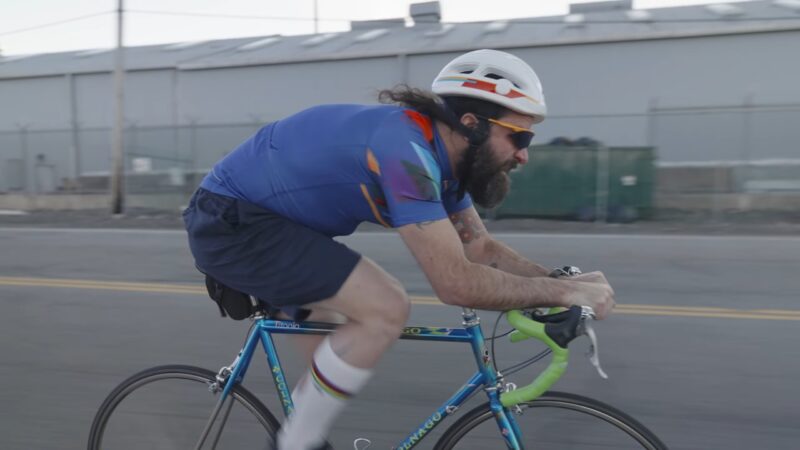
A cycling helmet is a non-negotiable safety gear. It must meet specific safety standards like ANSI Z90.4 or EN 1078.
Wearing a properly certified helmet can be the difference between a minor mishap and a serious injury. Always ensure your helmet fits well and is securely fastened.
Footwear
When it comes to footwear, triathlon-specific bike shoes are a great choice. They’re designed for quick transitions and offer comfort throughout the bike leg.
However, you can also use road bike shoes, mountain bike shoes, or even trainers if you prefer. The key is to choose shoes that you can pedal efficiently in.
Socks
Socks are all about personal comfort. Some triathletes wear them for added cushioning and blister prevention, while others prefer the barefoot feel. If you choose to wear socks, make sure they’re made of moisture-wicking material.
Remember, the right socks can keep your feet happy for the entire bike and run legs.
Run Attire
The final leg of your triathlon journey – the run – requires gear that will propel you forward with comfort and efficiency.
Running Trainers
When selecting the right trainers for the run leg, it’s essential to consider the fit from heel to toe and ensure they feel comfortable with your regular running stride. Look for a shoe that provides the right balance of cushioning and support, tailored to whether you run on roads or trails.
The upper should be seamless and not cause any chafing, while the ankle collar and heel counter should secure your foot without irritation. It’s also important to choose a shoe that complements your running style and gait, whether you need a neutral shoe or one that provides extra stability.
Elastic Shoe Laces
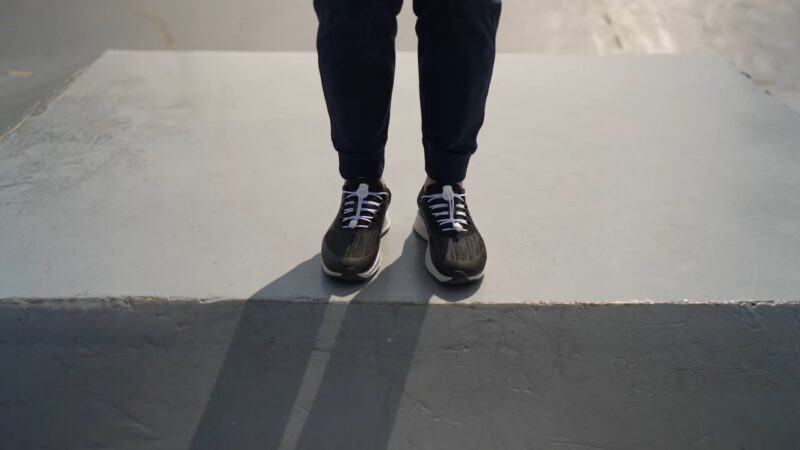
Elastic shoe laces offer a significant advantage for quick transitions, allowing you to slip your shoes on and off with ease, saving vital seconds during races. They maintain perfect tension, providing comfort and accommodating foot swelling without restricting circulation.
These laces stay securely fastened, eliminating the risk of them coming undone mid-run, which is especially beneficial in race situations. Additionally, elastic laces can be adjusted at any time and are useful in cold conditions when hands are too numb to tie standard laces.
Additional Dress Wear
For additional dress wear suitable for running, consider the following options based on the weather and your comfort:
Warm-Weather Running Clothes
On warm days, opt for clothing that wicks away moisture, keeps you cool, and provides sun protection. A combination of shorts, a breathable shirt, and moisture-wicking socks might be all you need.
Look for items with UPF ratings to protect against the sun’s rays.
Winter running clothes
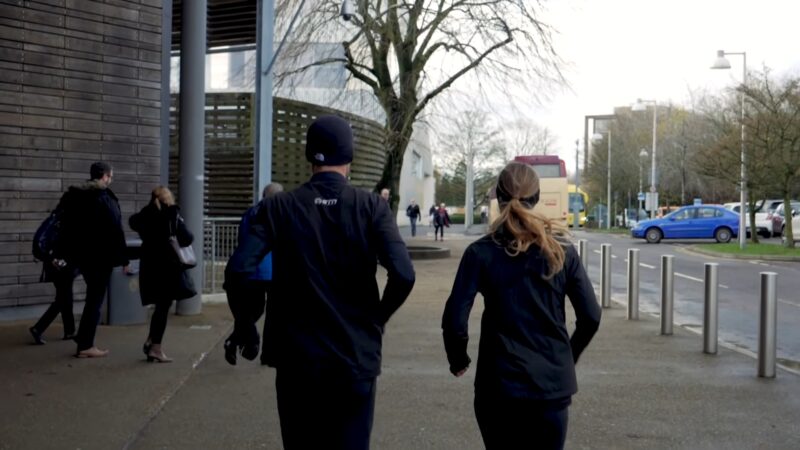
When temperatures drop, you may want to wear pants or tights, and a vest or soft-shell jacket. Insulated versions of these items are ideal for winter activities, keeping you warm without the bulk.
Remember, you’ll warm up once you start moving, so layer accordingly.
Additional Features to Consider
- Thumbholes in long-sleeve tops can increase hand coverage and warmth, possibly eliminating the need for gloves.
- An inner liner in running shorts can act as underwear, wicking moisture and drying fast to prevent chafing.
- Compression clothing can provide a snug fit and support during your run.
- Packable jackets and vests are convenient for changing weather conditions, as they can be easily stored away.
Remember to choose running attire that enhances your comfort and performance, regardless of the weather conditions. Happy running!
FAQ
How do I prevent chafing during a triathlon?
To prevent chafing, apply anti-chafe creams or balms to areas prone to irritation, such as underarms, thighs, and the neck area (for wetsuits). Ensure your tri-suit fits snugly without being too tight and choose seamless clothing where possible.
Can I wear a regular swimsuit for the swim leg?
While you can wear a regular swimsuit, a tri-suit is more beneficial as it is designed for all three events. Regular swimsuits lack the padding for cycling and may not be as aerodynamic or quick-drying.
Is it necessary to wear a different outfit for each event?
No, a tri-suit is designed to be worn throughout all three segments. It negates the need for outfit changes, saving time and maintaining comfort across swimming, cycling, and running.
How do I choose the best triathlon shoes?
Look for shoes that offer a balance of comfort, support, and quick transition features. For cycling, select shoes that ensure efficient pedaling, and for running, choose trainers that match your gait and provide adequate cushioning.
Are there specific triathlon socks?
While there are no specific triathlon socks, choose moisture-wicking, breathable socks for comfort. Some triathletes prefer thinner socks for cycling and thicker ones for running, or none at all for quicker transitions.
How important is sun protection during a triathlon?
Sun protection is crucial. Choose clothing with UPF ratings for UV protection, apply waterproof sunscreen, and consider accessories like sunglasses and a visor or hat during the run segment to protect against sun exposure.
Final Words
In preparing for a triathlon, selecting appropriate attire is crucial for performance and comfort across all three disciplines: swimming, cycling, and running. A tri-suit offers a versatile, all-in-one solution, designed for quick-drying and efficient transitions.
For swimming, goggles, a swim hat, and potentially a wetsuit, enhance comfort and performance. The same tri-suit serves well for cycling, complemented by a certified helmet and suitable footwear.
Socks are optional, based on personal comfort. In the run segment, properly fitting running trainers and elastic shoe laces ensure comfort and efficiency. Additional attire, like moisture-wicking clothing or insulated layers, can be chosen based on weather conditions.
Overall, the right gear not only boosts performance but also ensures safety and comfort throughout the triathlon.

